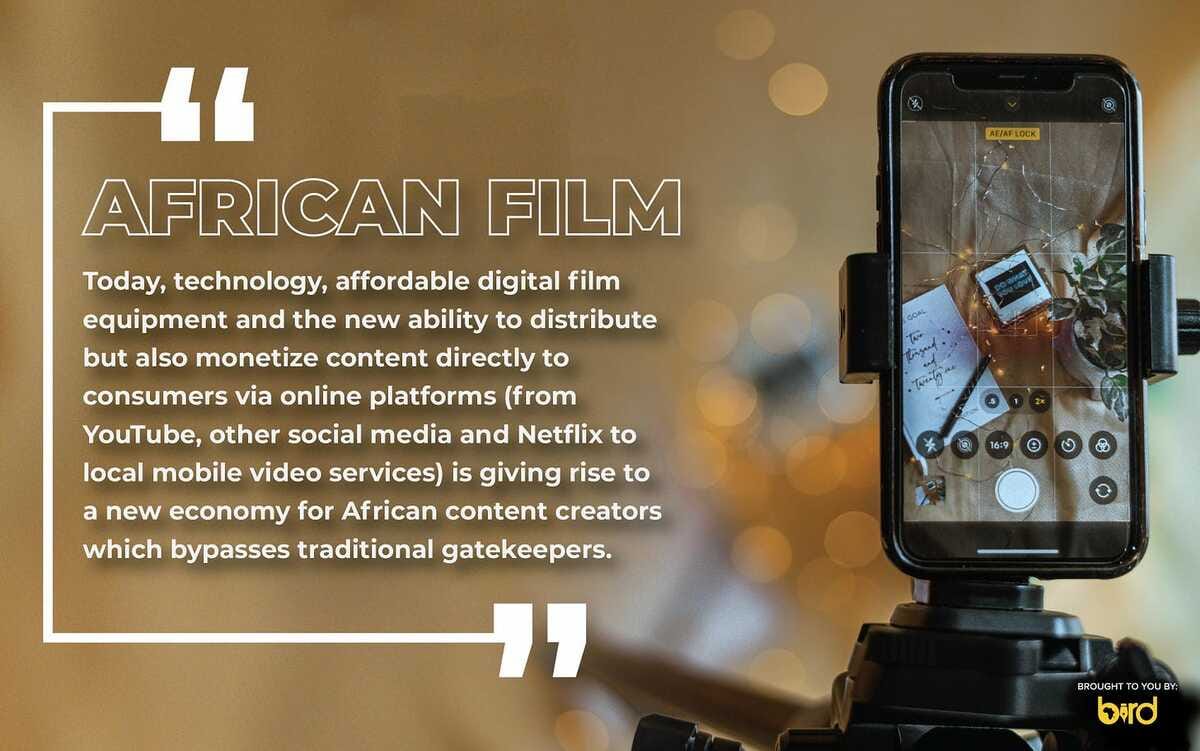
## It now only requires an internet-connected smartphone to both make and distribute a film, opening Africa's creatives to a world of revenue opportunities.
**By Conrad Onyango, bird**
Two months ago, a Kenyan actor and screenwriter, Abel Mutua and his business partner, Philip Karanja took to the street carrying placards to promote their new movie and raise funds for another production.
What stood out was their tongue-in-cheek messages, including this one, “Please buy our film. Inaongeza urembo na nguvu za kiume (it adds beauty and male potency),” a play on informal lamp-post and street-side advertising to capture the attention of potential buyers.
The campaign, which encouraged viewers to pay as little as a dollar and 80 cents to watch the film on the filmmakers' website, was then hyped through their Instagram handles - breaking geographical barriers to reach both a local and an international audience.
Within five days, the campaign, which had targeted sales of 50,000 links through ticket sales, had paid off.
To their delight, the film, ‘A Grand Little Lie’ had netted more than 37,000 US dollars, ushering in a new way to distribute and monetize film content in Africa.
“There is no Kenyan film that has ever made this much on sales,” trumpeted Mutua on one of his Instagram posts.
At the height of the pandemic, with low to zero physical audience numbers, Mutua was forced to start recording short films on his phone, leveraging affordable domestic internet data prices to share his content locally and the large Kenyan diaspora to pull a large international audience.
The ongoing digital revolution across the continent, fuelled by the COVID-19 pandemic, UNESCO says in its latest report on the sector, "Africa's booming film and audiovisual industry", is the real game-changer for the industry.
“Today, technology, affordable digital film equipment and the new ability to distribute but also monetize content directly to consumers via online platforms (from YouTube, other social media and Netflix to local mobile video services) is giving rise to a new economy for African content creators which bypasses traditional gatekeepers,” says the UNESCO report.
UNESCO lists Kenya, Rwanda, Ethiopia and Senegal among African markets where a new generation of creators is able to live from online revenues generated by their films.
The shift to digital video filmmaking is also opening up new avenues for African filmmakers to showcase more and diverse African content to a global audience, creating new markets within and outside the continent.
This global spotlight has affirmed global appeal for African stories, which are now attracting the interest of investors from the US and China.
“These stakeholders have focused mainly on the large English-language markets of South Africa, Nigeria and Kenya, but their ambition to expand across the continent is indicating a shift to a future in which the African continent has the potential to generate sustainable business models, breaking with traditional subsidy-based funding models,” explains the report.
Currently, it is estimated that Africa’s film and audiovisual sectors account for 5 billion US dollars in revenues, employing 5 million people. UNESCO points to the potential to quadruple revenues to 20 billion US dollars and the number of jobs to 20 million, annually.
But to unlock this potential, the report says effective policies, adequate resources and an enabling environment are critical elements that cannot be overlooked.
“There are positive signs that countries across the continent are waking up to the potential of their creative industries and more specifically of film and television,” says the UNESCO report.
According to the report, “at least seven countries, including Zambia, Zimbabwe and Sudan, are currently working on draft film policies, while a number of others are updating existing documents.”
**bird**